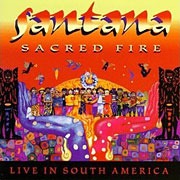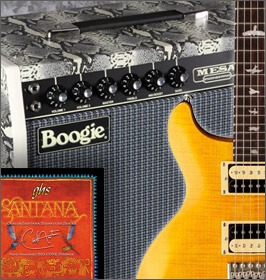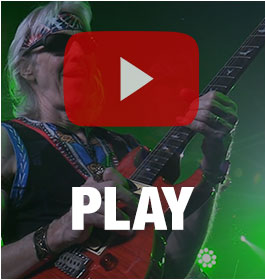The band also trots out Santana’s two biggest hits: “Black Magic Woman/Gypsy Queen” and “Oye Como Va,” both from 1970’s Abraxas. While Carlos’ playing is good throughout, it’s hard to match up to the melodic power of the originals. And Alex Ligertwood, as powerful a singer as he is, doesn’t quite capture the spookiness of Rolie’s performance.
Both of these versions also lack some of the dynamics of the classic recordings of the 1970 tracks. The is particularly evident on Oye Como Va, which loses the compelling “slinky” groove of the original. On the plus side is Santana’s eerie slide solo in Gypsy Queen, the blazing fast roll with which Perazzo starts the Timbale solo in the same song, and Raul Rekow on congas on both tracks.
Following is one of Santana’s most beloved instrumentals: the haunting “Samba Pa Ti,” also from Abraxas. Again, Carlos plays around with the melody, and does so very engagingly throughout. And, in traditional style, he throws in melodic bits from other songs here and there.

One of the standout tracks on the album is “Guajira,” originally recorded on Santana III. This is one of those case where one of the band’s live versions is much more compelling than the original studio cut. The vocals are powerful, the piano parts are traditionally Latin with a slight jazzy twist, and Carlos delivers two excellent solos. In one of his few solo appearances, Carlos’ brother Jorge Santana takes the first half of the first solo, which he starts with a very unusual melodic phrase. (It was quite possibly a mistake, but sounds great.)
“Make Somebody Happy,” from Milagro, showcases the vocalists — especially Ligertwood — but is a little off kilter from the rest of the album. It’s smooth R&B feel clashes with the Latin-rock flavor of the other songs.
Next is the band’s concert staple, the instrumental “Toussaint L’Overture,” on which Carlos delivers some simple but smooth tuneful guitar work. Plus, the percussion section is particularly vibrant on this track. Perazzo, especially, demonstrates why he has been Carlos’ long-time timbalero.
Although nothing will ever surpass the raw, drug-fueled version of “Soul Sacrifice” immortalized in the Woodstock movie, the band delivers a competent version of the song, which they’ve coupled to “Don’t Try This At Home,” a softly orchestral instrumental.
Second to last is Santana’s best-known instrumental song: “Europa.” And though this song has been recorded live many times, this is probably the richest, most appealing version of the venerable cut, with Carlos delivering a solo that is virtually a 6-minute-long melody, and aptly demonstrating why he is so revered as a guitar player.
Finally the album wraps up with the very first cut from the very first Santana record (often called Santana by Santana): “Jingo” (here re-titled “Jin-Go-La-Ba”). This also has been a live staple for years, and, while lacking the brutally raw attack of the 1969 studio version, is definitely a crowd pleaser.



